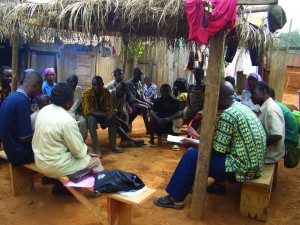IUFRO Spotlight #67 – Tapping the potential of restoring disturbed tropical forests
IUFRO Spotlight #67 – Tapping the potential of restoring disturbed tropical forests
Since the 1980s most deforestation globally has occurred in tropical countries – Africa, South America and Asia. The high rate of deforestation and degradation contributes to the disappearance of 13 million hectares of tropical forests each year.

Spotlight #32 – Sharing Knowledge to Rebuild Tropical Forests and Landscapes
Sharing Knowledge to Rebuild Tropical Forests and Landscapes
Tropical forests contain a huge amount of biological diversity, play a key role in human health, offer a vast array of ecosystem services and have become central to global debates on climate change.
 But extensive deforestation and degradation are causing a significant decline in the biological diversity and the ecosystem goods and services provided by them. And, in many African countries there is a notable connection between degradation and the inability of decision makers – and the larger society – to access existing scientific knowledge and innovations that could help reverse the impacts of forest degradation. Read more…
But extensive deforestation and degradation are causing a significant decline in the biological diversity and the ecosystem goods and services provided by them. And, in many African countries there is a notable connection between degradation and the inability of decision makers – and the larger society – to access existing scientific knowledge and innovations that could help reverse the impacts of forest degradation. Read more…
IUFROLAT III Keynote Address Highlights: Peter Holmgren, CIFOR
 Peter Holmgren, Director-General of the Center for International Forestry Research, presented his Keynote Address, “Forestry in a landscape approach – developing evidence-based policies”, during the final day of sessions of IUFROLAT III.
Peter Holmgren, Director-General of the Center for International Forestry Research, presented his Keynote Address, “Forestry in a landscape approach – developing evidence-based policies”, during the final day of sessions of IUFROLAT III.
Holmgren, presented a series of questions, framing a way forward to position forestry alongside that of other land users to address multi-sector problems in a landscape approach.
In his first question, “what are the policies we need?” he defined what shapes many of the forest policies, not only in Latin America, also on a global scale. These included poverty reduction, nutrition and food security, climate change adaptation and mitigation, preservation of biological diversity, and achieving green growth and equity. He outlined how forestry is related to 9 out of 12 sustainable development goals, and we need to think about where forestry can play a role in policies being politically relevant and providing positive contributions.
He transitioned by asking, “how does forestry contribute?” and presented his thoughts on how forestry is portrayed on increasingly large level. Forestry has become an environmental issue and forestry related questions are often blurred with perceptions of forests on a whole. Topics such as REDD, illegal logging, etc have brought attention to forests, yet fundamentally, they are not forestry issues. Holmgren proclaimed, “We need to take forestry out of the forest”. He explained how the adoption of a broader definition of the role of forestry, and how it applies to address key issues across a landscape, could be employed.
Expanding on this thought, Holmgren asked the question, “how is a landscape approach different?” In answer, he identified a sustainable landscape framework that focuses on objectives such as; ensuring livelihood provision, sustaining ecosystem services, securing food and non-food products, mitigating pollution and achieving resource efficiency. To do so, we need to see landscapes as a large part of sustainable development, identify multiple objectives and acknowledge that there are beneficial synergies as well as trade-offs. We need to build our work to ensure that local stakeholders are in charge and help strengthen the role of sectors to support them building a holistic landscape.
In order to provide this support, we must incorporate evidence-based approach in our science and policy interface. He answered his final question, “what is different about an evidence-based approach?”, by introducing new models that identified the importance of satisfying demand by stakeholders for information with relevant, credible forest science research.
Holmgren closed with some take home messages:
- It is time to take forestry out of the forest,
- We need a landscape approach to deal with sustainable development challenges; and
- Our plans for the future must be evidence-based.
